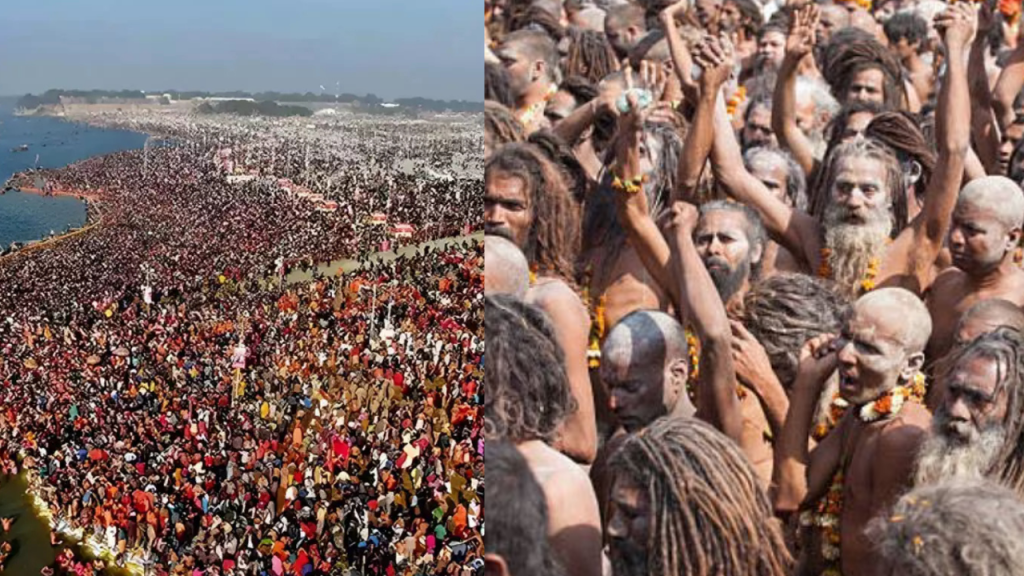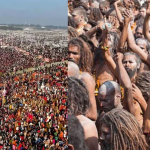The Maha Kumbh Mela is a big festival held every 12 years, and this year it’s happening in Prayagraj. Even though it’s cold, foggy, and might rain, thousands of people are arriving to camp by the Ganga River. They will stay in tents and take holy dips in the river, especially early in the morning under the stars.
The Kumbh Mela is one of the largest gatherings in the world. It is held in four cities: Prayagraj, Haridwar, Ujjain, and Nashik, based on astrological positions. There are also smaller versions called Ardh Kumbh (every 6 years) and the Maha Kumbh (every 12 years).
The Mahakumbh Mela 2025 starts today, January 13, and will end on February 26, 2025. This big event is special because it only happens in Prayagraj once every 12 years. Millions of people come to take a holy dip in the river to cleanse themselves.
What makes Mahakumbh 2025 extra special is the rare celestial alignment that happens only once every 144 years!
Here are the key dates for the Shahi Snan (Royal Bath) during Maha Kumbh 2025:
- January 13 - Paush Purnima Snan (Opening Day)
- January 15 - Makar Sankranti Snan
- January 29 - Mauni Amavasya Snan (Royal Bath)
- February 3 - Basant Panchami Snan (Royal Bath)
- February 12 - Maghi Purnima Snan
- February 26 - Maha Shivratri Snan (Ending Day)
The festival has many stories. Some people believe it started long ago and is mentioned in the Vedas and Puranas, while others think it began about 200 years ago. Whatever the origin, it is a time for devotion, prayer, and taking a holy bath to wash away sins. Millions attend to feel closer to God and seek blessings.
The Kumbh Mela comes from an old myth. The word "Kumbh" means pitcher. The story says that when the gods (Devas) and demons (Asuras) were churning the ocean for a special drink called amrita (the elixir of immortality), the gods’ son, Jayant, ran off with the pitcher to stop the demons from getting it. Four other gods, including the Sun, Moon, Shani, and Jupiter, helped protect the pitcher.
As Jayant ran, some of the amrita spilled at four places: Haridwar, Prayagraj, Ujjain, and Nashik. The run lasted 12 days, and since one day of the gods equals one year for humans, Kumbh Mela is celebrated every 12 years in these places.
Prayagraj and Haridwar also have a smaller version of the festival every 6 years called Ardh-Kumbh. The Maha Kumbh, the biggest festival, happens after 12 years.
People believe that by taking a dip in these sacred rivers during the Kumbh, they can wash away their sins and earn spiritual merit (punya).
The Kumbh Mela is also a time when holy men (Sadhus) gather, and visitors can meet them and learn from their wisdom.
The place for each Kumbh Mela is decided based on astrology. The festival happens every 12 years because it takes Jupiter 12 years to circle the Sun.
Here's how the locations are chosen:
- Haridwar – When Jupiter is in Aquarius and the Sun and Moon are in Aries and Sagittarius.
- Prayagraj – When Jupiter is in Taurus and the Sun and Moon are in Capricorn (around Makar Sankranti).
- Nashik – When Jupiter is in Leo and the Sun and Moon are in Cancer. This is also called the Simhastha Kumbh.
The alignment of planets helps decide where the Kumbh is held each time!
There is a lot of debate about the history of the Kumbh Mela. Some people say it started long ago, based on the Skanda Purana. Others point to the Chinese traveler Xuanzang, who wrote about a big fair in Prayag in the 7th century.
Professor Girija Shankar Shastri from Banaras Hindu University says that no ancient text clearly mentions the Kumbh Mela as we know it today. While the story of the Samudra Manthan (churning of the ocean) is in many books, it doesn't specifically mention the amrita (elixir) spilling at four places.
Some people believe the Rig Veda has lines about the benefits of the Kumbh Mela. Others say it was Adi Shankaracharya, an important Hindu philosopher from the 8th century, who set up these fairs so holy men could meet, share ideas, and guide others.
At the Kumbh Mela, pilgrims do different things depending on their purpose. Some people come for just one holy dip in the river to wash away their sins. Others, called kalpwasi, stay by the river for a long time to focus on spirituality instead of everyday worries. They try to earn spiritual credit by donating things like money or food, called daan.
The Mela also has big markets where people sell and buy things. In the past, European coins and toys were even found there!
The Kumbh Mela is also a time for meeting holy men (Sadhus) and getting spiritual guidance. Some days, like Makar Sankranti or Vasant Panchami, are extra special for taking a dip in the river. People can also donate things like ghee to earn spiritual rewards.
There are different sadhu akhadaas (groups of holy men) who camp at the Mela. They bathe together in special processions called shahi snan. In the past, there were fights over which group should bathe first, but now it’s decided beforehand to avoid problems.









